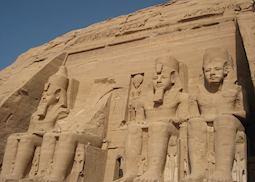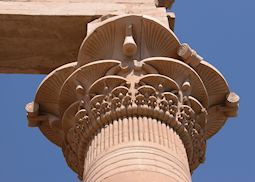
Abu Simbel tour, Egypt
Abu Simbel tour, Egypt
The great Sun Temple of Abu Simbel epitomises the monumentalism of the New Kingdom during its imperial heyday, when Ramses II waged colonial wars from the Bekaa Valley in Lebanon to the Fourth Cataract.
As the water rose behind the small dam, it became apparent that the Temple of Philae would now be partly submerged for half of the year on its island, with tourists having to pass through the halls and colonnades by boat. With the construction of the High Dam, it became apparent that the temple would be completely submerged, along with several other key Nubian monuments. UNESCO launched a bold scheme to save these monuments and they were moved block by block to dry land.
Philae was moved to another island, to preserve the special atmosphere of the temple. It was a centre for the cult of Isis, whose worship spread far and wide in the Roman Empire, and was Christianity's principal rival between the third and the fifth centuries.
Today, after a short boat ride, you disembark into a colonnaded courtyard which leads into the temple itself, flanked by wonderfully carved pylons. Off to the side is the Kiosk of Trajan, a small compact temple with delightfully carved columns.
These activities are designed to give you the most authentic experiences around where you're staying. We work with local guides, who use their knowledge and often a resident's eye to show you the main sights and more out-of-the-way attractions. Our specialists can suggest tours and activities that will introduce you to the local ways of life.
Abu Simbel tour, Egypt
The great Sun Temple of Abu Simbel epitomises the monumentalism of the New Kingdom during its imperial heyday, when Ramses II waged colonial wars from the Bekaa Valley in Lebanon to the Fourth Cataract.
Philae Temple Sound & Light Show
The highlight of this excursion is crossing the Nile in a boat and being greeted by sights of the floodlit Philae Temple silhouetted against the rocks and surrounding water.
You can enjoy this activity as part of the suggested tours below, or we can weave it into a trip shaped entirely around you.
